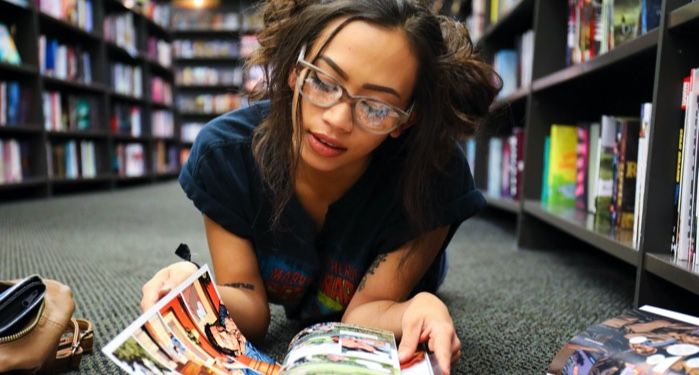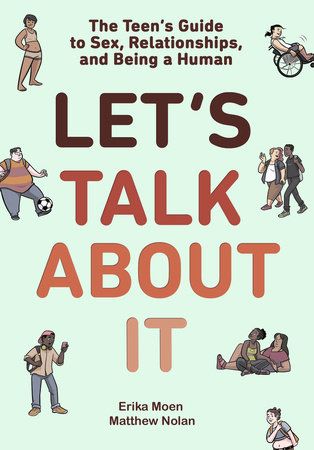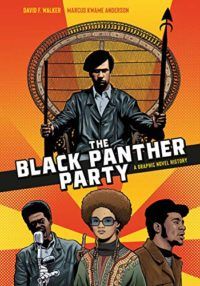
Recent and Upcoming Nonfiction Comic Releases
I know I’ve said it before but I’m going to say it again since it comes up periodically: comics are a medium not a genre and can, therefore, be used to explore all sorts of topics from superhero tales to history to sex ed to cooking. Author David F. Walker (The Black Panther Party, Bitter Root) has pointed out that using comics to teach actually gives a larger cross-section of the population access to the past and to their own stories, as it removes or lessens barriers such as interrupted education, reading level restrictions, financial restrictions, and comprehension difficulties.
Comics and animation can also influence the content of books in other mediums, lending their characters and themes to prose stories, poetry, art books, or other larger exploration of culture such as “philosophy of” or “theology of” anthologies and cookbooks.
Here are some upcoming non-fiction releases to help you explore the possibilities of the comics medium.
Let’s Talk About It by Matthew Nolan and Erika Moen (3/9)
Being a teenager is hard. There are all sorts of things going on with your body and in your brain. Sometimes you think you’ve got it all figured out and everything is great. Other days…not so much. And while you know you can always go to your trusted adult with questions, sometimes you want to do some research on your own.
Let’s Talk About It is a great place to start. It covers topics from body image to safe sex, handling rejection (alas, it happens to everyone), gender, and friendship, and it does so with thorough, well-researched information gathered by two experts on “sex, relationships, and being a human.” You’d think we’d be born knowing how to do that last one, but real talk; I’m 42 and I’m still figuring it out. And hey, just because it has pictures doesn’t mean it’s only for kids; anatomy is important and some folx are visual learners. Give Let’s Talk About It a read and then pass it on. Do your part to stop that rumor your older sister’s boyfriend’s cousin best friend started about that thing because I promise you, it is all kinds of wrong…
The Incredible Nellie Bly: Journalist, Investigator, Feminist, and Philanthropist by Luciana Cimino and Segio Algozzino (3/2)
Framed through the work of a fictional interviewer, this graphic biography explores the life of Nellie Bly, whose journalism career started with an angry letter to the editor in response to an 1885 Pittsburgh Dispatch editorial entitled “What Girls are Good For.” From there, it grew to include such monumental and groundbreaking works as: an exposé on factory working conditions, the brutality inside psychiatric hospitals, government corruption, and an 80 day trip around the world in a time when most women barely left their homes and if they did it was for work or to go to the market. All while maintaining her impeccable style and refusing to allow men to get in the way of her determination, self-reliance, and absolute mastery in the field.
I absolutely adore the art in The Incredible Nellie Bly as well as the subject. Algozzino has worked with sharp lines that keep the characters strong and focused but a color palette that’s primarily sepia toned to evoke the proper time period. Occasional pops of blue and red provide special detailing and emphasis.
Freiheit!: The White Rose by Andrea Grosso Chiponte (2/3)
In June of 1942, a group of students chose to stand up to the Nazis. They wrote and distributed pamphlets that called for their fellow countrymen to do the same, exposing the atrocities the government was committing to spur others to action against Hitler and his regime. Caught and executed by the Gestapo after only seven months, the White Rose remains an example to youth the world over: remember, their story proclaims, it isn’t the generation in power that’s destined to change the world — it’s the one coming behind them.
It’s a lesson that definitely bears repeating right now, don’t you think?
The Black Panther Party: A Graphic Novel History by David F. Walker and Marcus Kwame Anderson (1/19)
How much did you learn about the Black Panthers in school? How much have you sought out since? The answer for most of us is probably “not much.” Okay, fair enough. But if the BLM protests last summer, and all the fucking clownery since, has taught us anything it’s that if we really want to be good allies then we have to put in the effort to remedy our ignorance. We have to figure out what we don’t know and take the time to fill those gaps in. That information isn’t something anyone owes us. Collecting it, internalizing it, teaching it? Those are our jobs to do
Go read a book. This one. Now. Why are you still here looking at me? Go.
Cooking Comics!: Simple Skills, Fantastic Food by Lauren Thompson and Tsukuru Anderson
Alright, this one is older than the rest of the list but I’m including it to make a point about how helpful books with pictures can be.
About 12 years ago, I ended up with a TBI. Prior to that, I could read instructions and do the thing. Almost any thing. Post-injury, this was no longer the case; I had to be able to visualize the task to be able to do it, which means if instructions were text only, I had to watch someone execute them step by step (in person or in a video). In some cases, I had to do it with them.
I could, however, follow instruction that were accompanied by pictures. Which means in order to follow a new recipe for the first time I needed cookbooks like Cooking Comics.
Things have gotten a bit better over the years, but I still do better when I have at least some illustrations or photos to compare my product too. I know other people feel the same, so consider learning style when you’re buying an instructional book for yourself or for a gift.
What else can comics do? Honestly? Anything. Anything with pictures. That’s why they’re great and why people should consider them as teaching materials more often. There’s a reason your Ikea furniture has diagrams, y’all. And why marketing folks use charts. Everything is better with art.


















